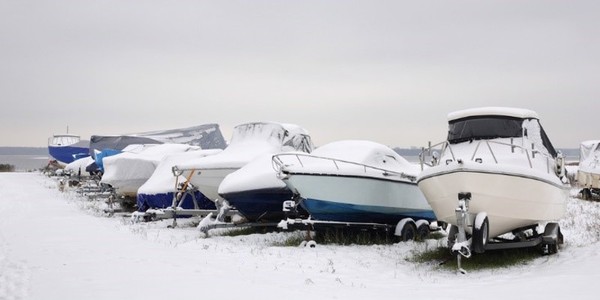
As winter thaws away and warmer, sunnier days approach, it is the perfect time to get your boat out of storage and de-winterized before hitting the waters again. Fortunately, this process should be much more convenient if you properly prepared your boat before it was stowed away for winter. Continue reading for some of our helpful tips on examining the interior and exterior of your boat to make sure everything checks out this spring.
Check the Engine
The engine is the heart of your boat, and it has not been getting any exercise while the boat has been stowed away for winter which is why it is crucial to double check the engine first before attempting to set sail. This includes an oil change and the correct additives when you replace the oil filter. Doing this in your regular maintenance will keep the engine from corroding or rusting over time, extending its lifespan, and allowing you more time on the water.
Top Off the Cooling System
The cooling system is typically drained before the winterization process to prevent the coolant line from freezing and causing further complications come springtime. Before refilling it, check all the system’s hoses for holes and cracks in case the harsh freeze of winter caused any damage, and also empty the strainer too. Once everything checks out, refill the cooling system again.
Test Your Battery
Freezing temperatures and idleness can place a lot of stress on the battery of your boat. Checking the battery includes replenishing any fluids, and we recommend using distilled water to prevent imperfections from entering the battery. Using a battery tester, check the volts and amps – if it cannot hold a charge, it most likely needs a replacement. If it is still in working condition, clean any corrosion from the battery terminals before hooking it back up.
Examine and Replenish the Fuel System
Unlike the cooling system, the fuel system is typically left full of fuel stabilizer before being winterized to prevent moisture from getting into the fuel tank and causing problems. However, by spring, this fuel is probably stale, and we recommend draining it out and refilling the tank with fresh fuel. Also, inspect the fuel line for any cracks, as it can also be susceptible to damages from the extreme cold since they are mostly made of rubber. Lastly, if your fuel filter is the same one that was used last season, put in a new one and replace it periodically to keep the boat running smoothly.
Check the Interior and Exterior for Damages
Now that many of your boat’s systems are back in working order, the last step is checking the boat’s physical surfaces for any damage that could eventually cause leaks or other complications. According to statistics, one third of boats sink on the water due to a compromised hull. Even if your boat went into winterization in pristine condition, it is important to remember that it has undergone tremendous stress throughout these icy months so always give it a thorough look-over for cracks, gouges, and holes.
At Great Lakes Yacht Sales, we offer sales, services, and storage to new boating enthusiasts and seasoned yachtsmen alike – including winterization when that time of the year rolls back around. We understand the importance of keeping your boat safe, which is why we include many services to both enhance your quality of life and prolong the life of your boat, such as boat repair and boat storage. Consider giving us a call today for all your boating needs – our experience and dedication to our customers ensures a great experience every time.